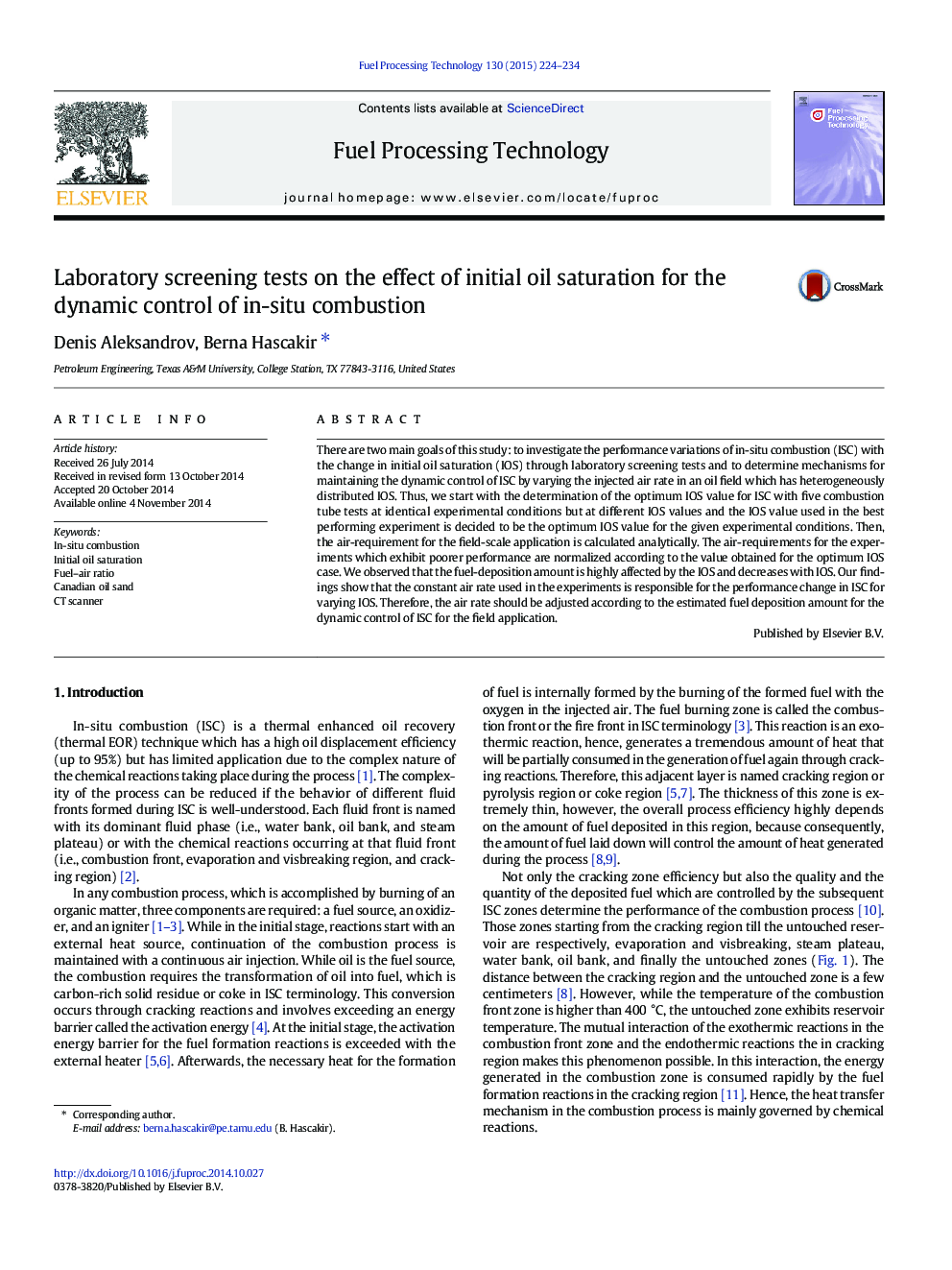| Article ID | Journal | Published Year | Pages | File Type |
|---|---|---|---|---|
| 209557 | Fuel Processing Technology | 2015 | 11 Pages |
•The dynamic control of ISC can be maintained by varying the operational parameters.•There is an optimum air rate for every initial oil saturation value.•The LTO reactions are responsible mainly from the viscosity reduction.•The HTO reactions essentially contribute the gravity improvements during ISC.•Some of the LTO products may decrease the effectiveness of ISC considerably.
There are two main goals of this study: to investigate the performance variations of in-situ combustion (ISC) with the change in initial oil saturation (IOS) through laboratory screening tests and to determine mechanisms for maintaining the dynamic control of ISC by varying the injected air rate in an oil field which has heterogeneously distributed IOS. Thus, we start with the determination of the optimum IOS value for ISC with five combustion tube tests at identical experimental conditions but at different IOS values and the IOS value used in the best performing experiment is decided to be the optimum IOS value for the given experimental conditions. Then, the air-requirement for the field-scale application is calculated analytically. The air-requirements for the experiments which exhibit poorer performance are normalized according to the value obtained for the optimum IOS case. We observed that the fuel-deposition amount is highly affected by the IOS and decreases with IOS. Our findings show that the constant air rate used in the experiments is responsible for the performance change in ISC for varying IOS. Therefore, the air rate should be adjusted according to the estimated fuel deposition amount for the dynamic control of ISC for the field application.
